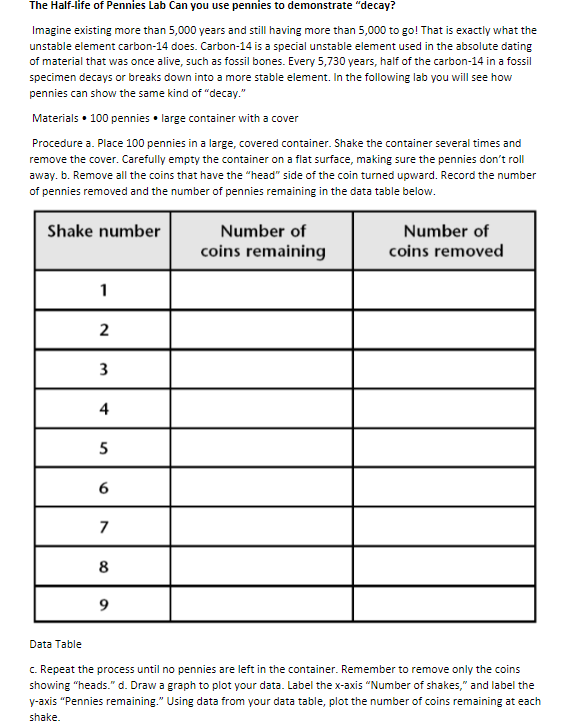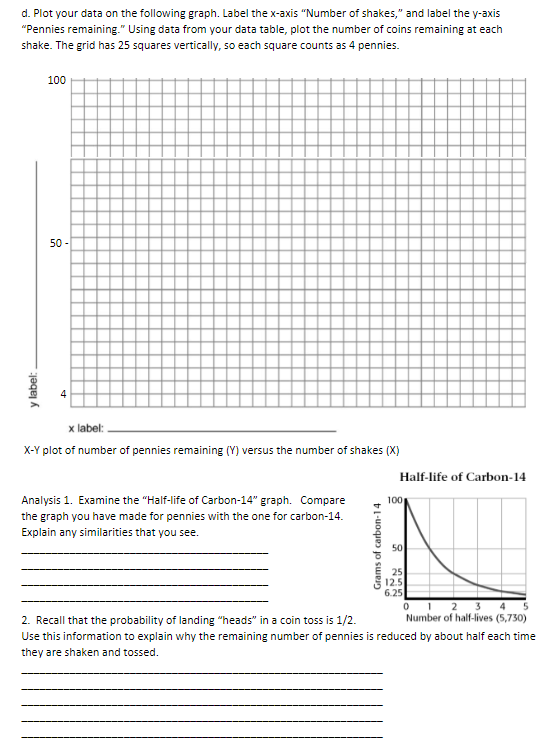Analysis 1. Examine the "Half-life of Carbon-14" graph. Compare the graph you have made for pennies with the one for carbon-14. Explain any similarities that you see. Grams of carbon-14 Half-life of Carbon-14 100 50 25 12.5 6.25 0 1 2 3 Number of half-lives (5,730) 2. Recall that the probability of landing "heads" in a coin toss is 1/2. Use this information to explain why the remaining number of pennies is reduced by about half each time they are shaken and tossed.
Radioactive decay
The emission of energy to produce ionizing radiation is known as radioactive decay. Alpha, beta particles, and gamma rays are examples of ionizing radiation that could be released. Radioactive decay happens in radionuclides, which are imbalanced atoms. This periodic table's elements come in a variety of shapes and sizes. Several of these kinds are stable like nitrogen-14, hydrogen-2, and potassium-40, whereas others are not like uranium-238. In nature, one of the most stable phases of an element is usually the most prevalent. Every element, meanwhile, has an unstable state. Unstable variants are radioactive and release ionizing radiation. Certain elements, including uranium, have no stable forms and are constantly radioactive. Radionuclides are elements that release ionizing radiation.
Artificial Radioactivity
The radioactivity can be simply referred to as particle emission from nuclei due to the nuclear instability. There are different types of radiation such as alpha, beta and gamma radiation. Along with these there are different types of decay as well.


Trending now
This is a popular solution!
Step by step
Solved in 3 steps








